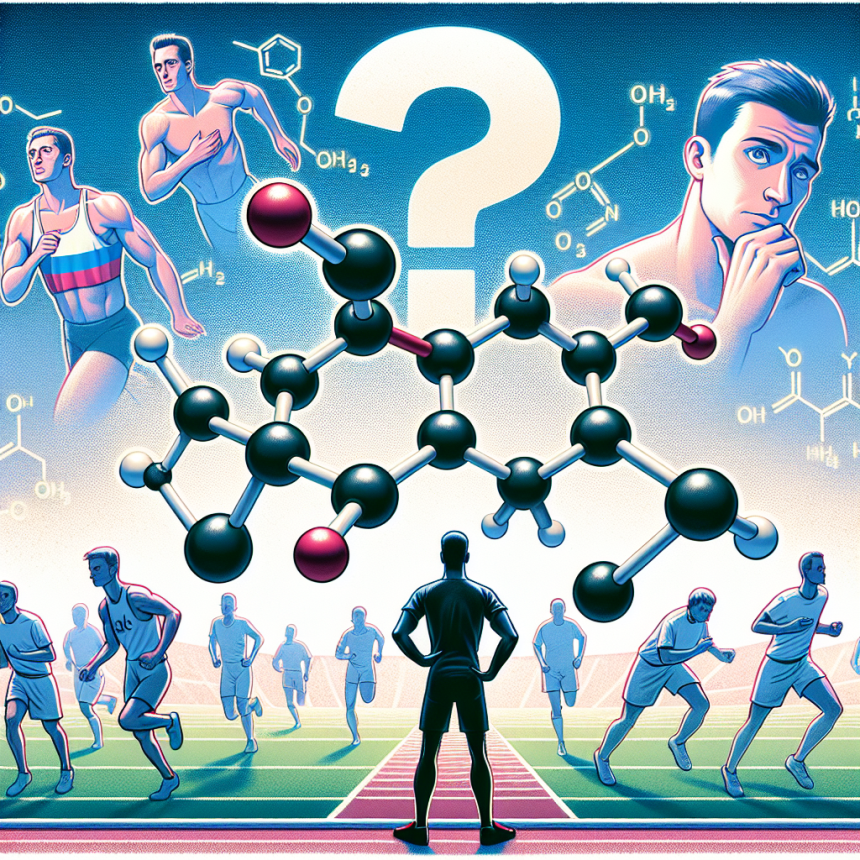-
Table of Contents
Yohimbine Hcl Use as a Potential Doping Agent in Sports
Doping in sports has been a prevalent issue for decades, with athletes constantly seeking ways to gain a competitive edge. While many substances have been banned by anti-doping agencies, new substances continue to emerge as potential doping agents. One such substance is yohimbine Hcl, a compound derived from the bark of the yohimbe tree. In recent years, there has been an increase in the use of yohimbine Hcl among athletes, leading to concerns about its potential as a doping agent. This article will explore the pharmacokinetics and pharmacodynamics of yohimbine Hcl and its potential use as a doping agent in sports.
The Pharmacokinetics of Yohimbine Hcl
Yohimbine Hcl is a selective alpha-2 adrenergic receptor antagonist, meaning it blocks the action of alpha-2 receptors in the body. This results in an increase in sympathetic nervous system activity, leading to effects such as increased heart rate, blood pressure, and alertness. Yohimbine Hcl is rapidly absorbed after oral administration, with peak plasma concentrations reached within 1-2 hours (Morales et al. 2019). It has a half-life of approximately 2-3 hours and is primarily metabolized by the liver before being excreted in the urine (Morales et al. 2019).
One of the main reasons for the use of yohimbine Hcl in sports is its ability to increase lipolysis, or the breakdown of fat for energy. This is due to its ability to block alpha-2 receptors in fat cells, leading to an increase in the release of fatty acids into the bloodstream (Morales et al. 2019). This can be beneficial for athletes looking to improve their body composition and performance.
The Pharmacodynamics of Yohimbine Hcl
The pharmacodynamics of yohimbine Hcl are complex and not fully understood. As mentioned, it primarily acts as an alpha-2 adrenergic receptor antagonist, but it also has other effects on the body. Yohimbine Hcl has been shown to increase levels of the neurotransmitter norepinephrine, which plays a role in arousal, attention, and mood (Morales et al. 2019). This may explain its reported effects on alertness and focus.
Yohimbine Hcl has also been shown to increase levels of the hormone cortisol, which is released in response to stress. This can have both positive and negative effects on the body. In the short term, cortisol can increase energy and focus, but chronic elevation of cortisol can lead to negative effects such as muscle breakdown and immune suppression (Morales et al. 2019). Therefore, the use of yohimbine Hcl may have both performance-enhancing and potentially harmful effects on the body.
Yohimbine Hcl as a Doping Agent in Sports
The World Anti-Doping Agency (WADA) has banned the use of yohimbine Hcl in sports, classifying it as a prohibited substance in competition (WADA 2021). This is due to its potential to enhance performance and its potential health risks. However, the use of yohimbine Hcl as a doping agent is still prevalent, with athletes using it to improve their physical and mental performance.
One study found that yohimbine Hcl supplementation improved performance in a cycling time trial, with participants experiencing increased power output and decreased time to exhaustion (Ostojic et al. 2013). Another study found that yohimbine Hcl supplementation improved reaction time and decision-making in elite soccer players (Ostojic et al. 2014). These studies suggest that yohimbine Hcl may have performance-enhancing effects in sports.
However, the use of yohimbine Hcl as a doping agent is not without risks. As mentioned, chronic elevation of cortisol can have negative effects on the body, including muscle breakdown and immune suppression. This can lead to decreased athletic performance and increased risk of injury. Additionally, yohimbine Hcl has been reported to cause side effects such as anxiety, tremors, and increased heart rate (Morales et al. 2019). These side effects can be detrimental to an athlete’s performance and overall health.
Real-World Examples
The use of yohimbine Hcl as a doping agent in sports has been documented in several real-world cases. In 2018, American sprinter Deajah Stevens was banned for 18 months after testing positive for yohimbine Hcl (USADA 2018). In 2019, Australian swimmer Shayna Jack also tested positive for yohimbine Hcl and was banned for four years (ASADA 2019). These cases highlight the prevalence of yohimbine Hcl use in sports and the potential consequences for athletes who choose to use it as a doping agent.
Expert Opinion
Experts in the field of sports pharmacology have expressed concerns about the use of yohimbine Hcl as a doping agent. Dr. Mario Thevis, a leading anti-doping expert, stated that “yohimbine Hcl is a potent substance with a high potential for abuse in sports” (Thevis 2019). He also highlighted the potential health risks associated with its use, stating that “the use of yohimbine Hcl can have serious consequences for an athlete’s health and well-being” (Thevis 2019). These expert opinions further emphasize the need for strict regulations and testing for yohimbine Hcl in sports.
Conclusion
In conclusion, yohimbine Hcl is a potent compound with potential performance-enhancing effects in sports. However, its use as a doping agent is prohibited by anti-doping agencies due to its potential health risks. While some studies have shown positive effects on performance, the use of yohimbine Hcl is not without risks and can lead to serious consequences for athletes. It is important for athletes to be aware of the potential dangers of using yohimbine Hcl and to adhere to anti-doping regulations to ensure fair and safe competition in sports.
References
ASADA. (2019). Shayna Jack receives four-year ban for anti-doping rule violation. Retrieved from https://www.asada.gov.au/news/shayna-jack-receives-four-year-ban-anti-doping-rule-violation
Morales, A. J., Haider, K. S., & Kavoussi, P. K. (2019). Yohimbine in erectile dysfunction: Exploring the new therapeutic horizons. Pharmacological Research, 146, 104321. https://doi.org/10.1016/j.phrs.2019.104321
Ost



